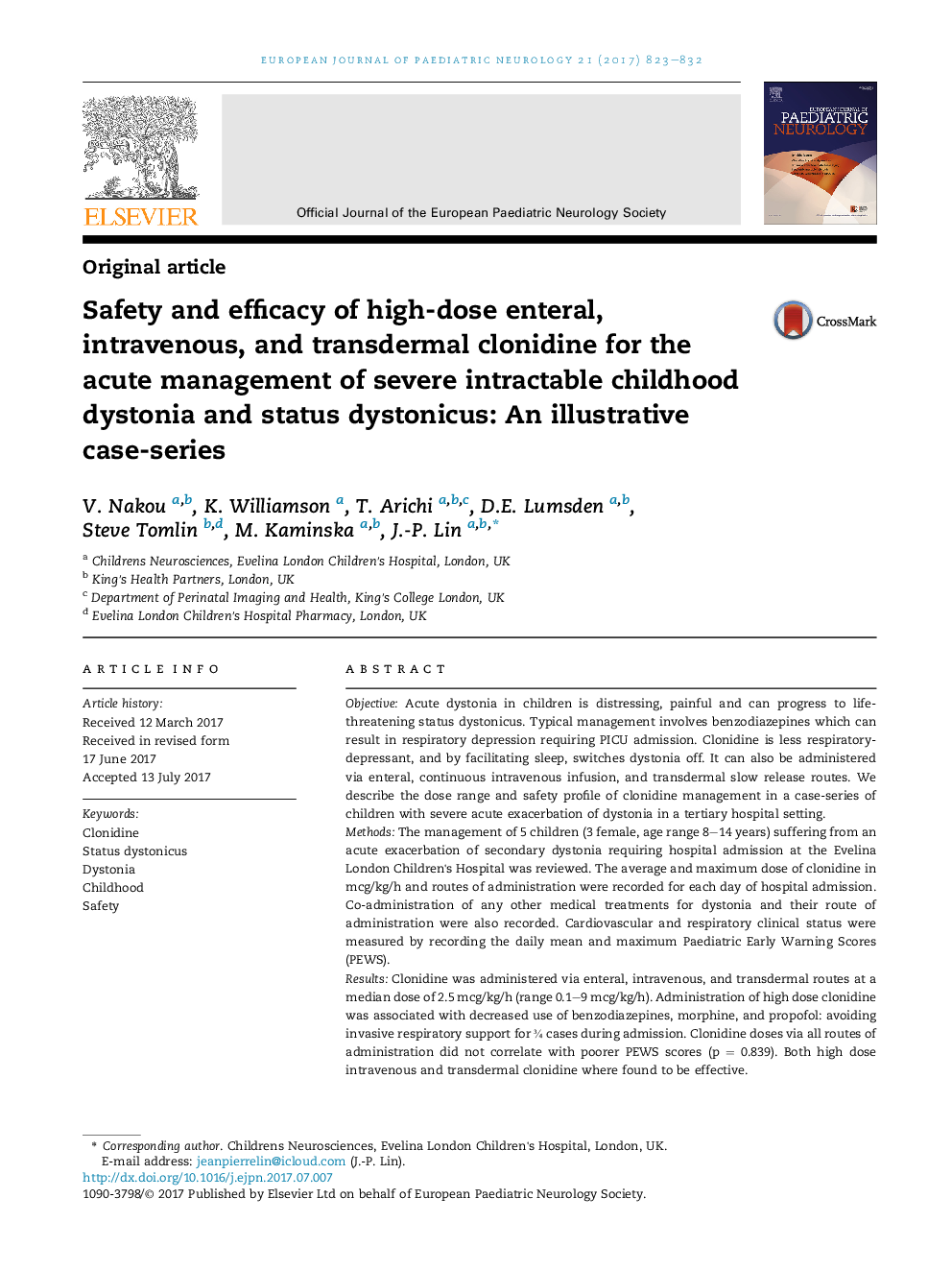| کد مقاله | کد نشریه | سال انتشار | مقاله انگلیسی | نسخه تمام متن |
|---|---|---|---|---|
| 5628824 | 1579997 | 2017 | 10 صفحه PDF | دانلود رایگان |
- Clonidine provide an alternative to benzodiazepines and opiate infusions in the management of childhood status dystonicus within a multidisciplinary setting.
- Clonidine doses of 0.5-3 mcg/kg/h (range 0.1-9 mcg/kg/h) may be necessary to safely manage acute severe dystonia and in our experience does not result in severe hypotension or respiratory depression.
- Severe dystonia is effectively monitored using the Dystonia Severity Assessment Plan (DSAP) scoring system monitor dystonia based on meaningful function and comfort.
- Clonidine restore sleep in dystonic children which promotes dystonia relief.
- Relief of fragmented sleep patterns in childhood dystonia forms the cornerstone of dystonia management.
ObjectiveAcute dystonia in children is distressing, painful and can progress to life-threatening status dystonicus. Typical management involves benzodiazepines which can result in respiratory depression requiring PICU admission. Clonidine is less respiratory-depressant, and by facilitating sleep, switches dystonia off. It can also be administered via enteral, continuous intravenous infusion, and transdermal slow release routes. We describe the dose range and safety profile of clonidine management in a case-series of children with severe acute exacerbation of dystonia in a tertiary hospital setting.MethodsThe management of 5 children (3 female, age range 8-14 years) suffering from an acute exacerbation of secondary dystonia requiring hospital admission at the Evelina London Children's Hospital was reviewed. The average and maximum dose of clonidine in mcg/kg/h and routes of administration were recorded for each day of hospital admission. Co-administration of any other medical treatments for dystonia and their route of administration were also recorded. Cardiovascular and respiratory clinical status were measured by recording the daily mean and maximum Paediatric Early Warning Scores (PEWS).ResultsClonidine was administered via enteral, intravenous, and transdermal routes at a median dose of 2.5 mcg/kg/h (range 0.1-9 mcg/kg/h). Administration of high dose clonidine was associated with decreased use of benzodiazepines, morphine, and propofol: avoiding invasive respiratory support for ¾ cases during admission. Clonidine doses via all routes of administration did not correlate with poorer PEWS scores (p = 0.839). Both high dose intravenous and transdermal clonidine where found to be effective.ConclusionsHigh dose clonidine administered via different routes can be used in the acute management of severe exacerbations of dystonia. Its use in our cohort was not associated with significant cardio-respiratory depression even at doses as high as 9 mcg/kg/h.
Journal: European Journal of Paediatric Neurology - Volume 21, Issue 6, November 2017, Pages 823-832
